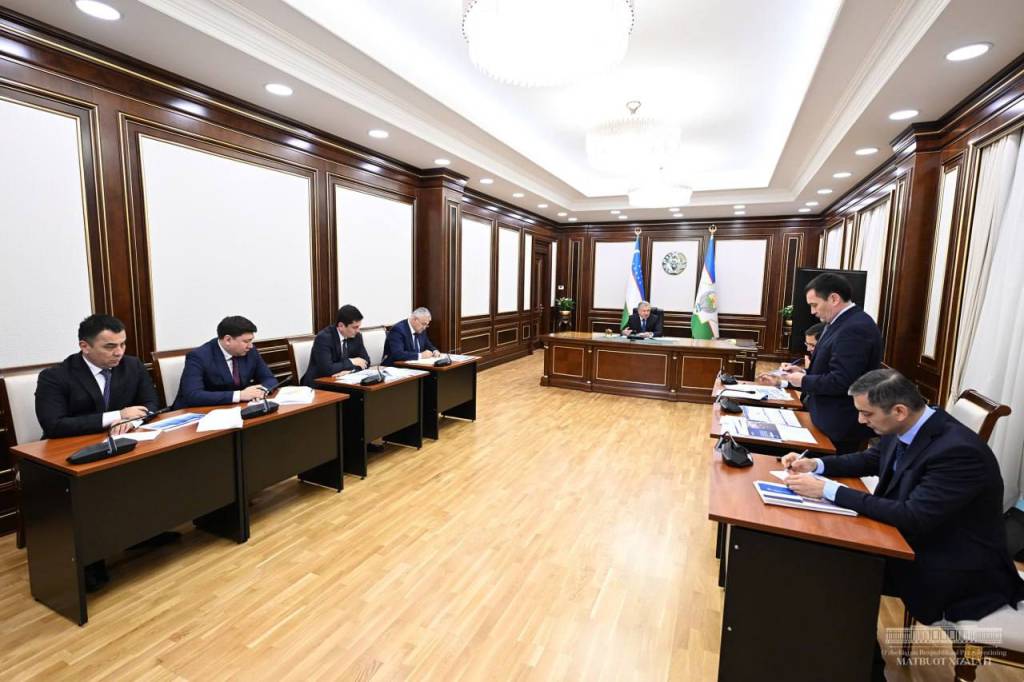
On February 22, President Shavkat Mirziyoyev got acquainted with a presentation on the transformation of state-owned enterprises in the aviation sector.
In recent years, significant opportunities have been created for the private sector in the aviation services market. The number of airlines has reached 15, including ten private ones. Last year, 28 new aircraft were purchased. As a result, the number of flights has doubled over the past seven years. Thanks to the transfer of Samarkand airport to private management, passenger traffic increased fourfold and reached a million.
However, aviation services grew by just 11.6 percent last year. Uzbekistan’s strategy until 2030 is to increase the number of air transportation fourfold. The industry’s annual growth rate must be at least 20 percent to achieve this goal.

This requires systemic work in infrastructure, management, prices, and quality. In Uzbekistan, air ticket prices are relatively high. The number of domestic and international flights is insufficient to meet existing demand. The bulk of flights continue to take place at the airports of Tashkent and Samarkand. Airports have limited capacity to handle aircraft and passengers, with ancillary services accounting for only 7 percent of their total revenue. The transit potential of Tashkent, Navoi, and Namangan airports is not fully used.
Plans for the current year to accelerate the transformation process in the Uzbekistan Airways and Uzbekistan Airports joint stock companies, expand services, and increase revenues were discussed at the event.
In particular, obtaining an international credit rating for the national airline and its entry into an IPO will begin. Bukhara, Namangan, Urgench, and Andijan airports will be modernized and transferred to private management. This year, the number of flights is expected to increase by 20 percent.

Measures are envisaged to reduce costs in the industry by 20 percent. Old aircraft with high fuel consumption will be sold, and modern, fuel-efficient aircraft will be purchased. A significant reduction in fuel consumption will be achieved by selecting optimal flight routes to 72 destinations. Unused and unprofitable assets will be put up for sale.
Responsible persons were instructed to approve a cost reduction program, increase the competitiveness of services, and speed up private partnership projects. The need to increase additional airport services, develop aircraft maintenance at Navoi Airport, and fully use its potential was emphasized.
Issues of attracting foreign qualified specialists to state-owned airlines and improving personnel training were also discussed.
UzA








